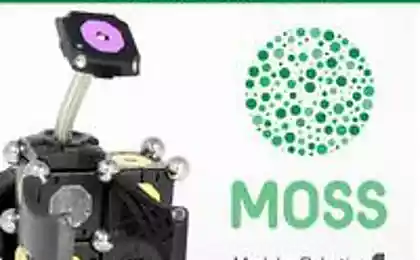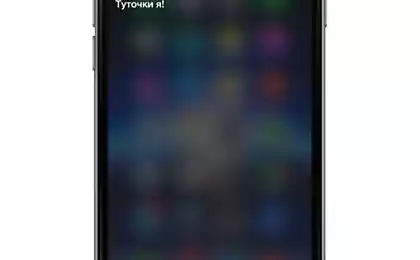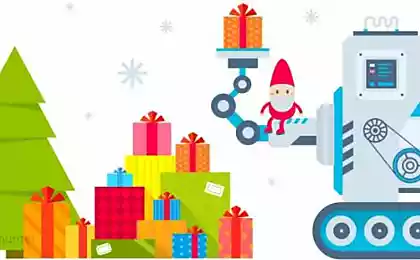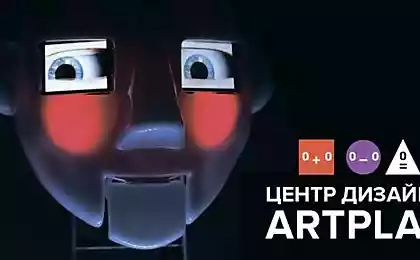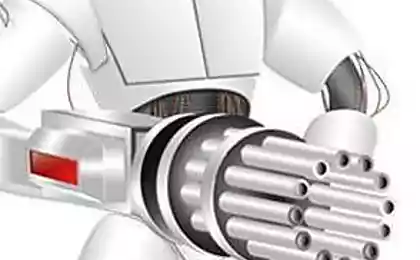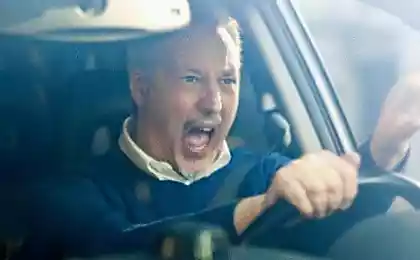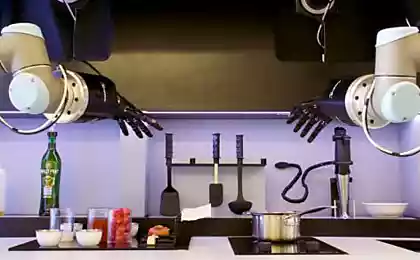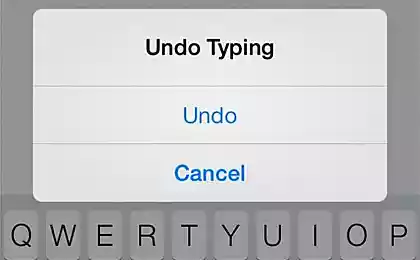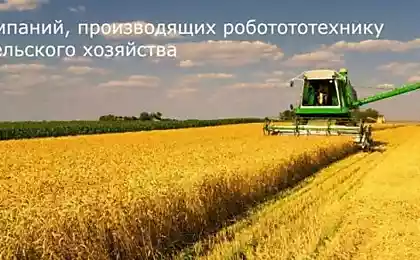1029
Home robots: from idea to product
Since ancient times, people wanted to talk to the outside world. Talking things around him in tales and legends. Wicked Queen communicates with the speaker of the mirror, Gollum complains of the hardships and tribulations of being Ring, Tamerlane talked with stones and gave them names.
All this because the voice - the most natural way of communication for human verbal communication is in our genes. And today we are very close to the embodiment of the oldest dreams of mankind by means of high technology.
In Cubic Robotics, we believe that the fastest way to "speaking world" is through the creation of a universal voice of the operating system, which on the one hand can be installed on any device. On the other hand such a system could be developed independent developers worldwide. Such is developed and patented by our voice operating system VOIS (Voice Operation Intellectual System).

V.O.I.S. - Universal voice operating system with which you can make almost any subject speaking. Talking means not just take voice commands, but to really understand a person to maintain and even initiate a conversation. This is the artificial intelligence inside the our development - a robot assistant Cubic (we talked about it in detail in a previous article).
Also on the basis V.O.I.S. already created and designed talking cars, intelligent assistants for smartphones and handheld gadgets.
How it works
We must be honest with ourselves: to create a true artificial intelligence is unlikely in the near future, it needs a lot of money, the huge computing power of laboratories, and the best minds of the planet. However, the current technology can create an operating system with elements of AI.
From a technological point of view, VOIS is a programming language, the core of the system and set the application to control various functions of the speech.
The basis of the principle of VOIS - Is the ability to understand the context of the conversation, as well as emulation of human conversation. You ask a question and get an answer, not a set of links found on a search engine.
In fact, inside the process looks like this: as soon as the server comes phrase user, it starts to look for options that might come up as a response. For this, we used several different engines from the classic chat bot to statistical search algorithm on the basis of dialogue. For example, the user asks - "What is there in the street»?
On this question there are several answers. Among other things, the server will consider such options:
- On the street 25 degrees and the sun is shining.
- The street is very serious jams, do not go by car.
A database search of successful dialogues can give something like: "You yourself can see, unlike me, you have legs».
Regarding the correct answers can be quite a few (hundreds). It is important to choose the one that is needed now is the user. Is responsible for this algorithm to check the context (statistical).
It can be shown that if the database has information about what the user has a car, he is likely interested in cork. And if the user just talked about the weather (for example, asked the weather for tomorrow), the logical answer to him about the weather outdoors.
Setting the context - a difficult task. Some of it is based on an analysis of the existing data base correct dialogues. Some rules have to manually prescribe, others stem from formal logic. For example, the most simple and effective rule: if two answers are equally good, it will pick one topic that is closest to the last conversation.
Of course, at the present stage of development of VOIS periodically gives a very strange answers: Many scenarios have not yet registered and are not included in its database, so happen curiosities.
What's next
Today, several companies have already expressed interest in the VOIS and devices based on it: not so long ago we talked with representatives of Samsung and automaker Kamaz.
Samsung twice met with us at one of the meetings attended by representatives of the company's head office, which is very interested in the project Cubic. In turn KAMAZ proposed to create a voice interface for the onboard computer of the new models of KAMAZ.
In both cases, specific arrangements we have not yet reached, but negotiations continue.
However, our main goal now - it's launch mass production of the robot Cubic (now go debugging work in a factory in China) and the creation of an API for VOIS, thus to make the system available for each developer.
We hope that by the end of 2014 will be established infrastructure provides an opportunity for everyone to develop their own applications for VOIS or create a talking device on its base.
Especially since the development of applications for VOIS - It is much simpler than creating these things for smartphones: GUIs are not needed.
About the examples of integration in our system in a variety of devices will be discussed in the next article, but for now are ready to answer your questions.
Source: habrahabr.ru/company/cubicrobotics/blog/222655/
All this because the voice - the most natural way of communication for human verbal communication is in our genes. And today we are very close to the embodiment of the oldest dreams of mankind by means of high technology.
In Cubic Robotics, we believe that the fastest way to "speaking world" is through the creation of a universal voice of the operating system, which on the one hand can be installed on any device. On the other hand such a system could be developed independent developers worldwide. Such is developed and patented by our voice operating system VOIS (Voice Operation Intellectual System).

V.O.I.S. - Universal voice operating system with which you can make almost any subject speaking. Talking means not just take voice commands, but to really understand a person to maintain and even initiate a conversation. This is the artificial intelligence inside the our development - a robot assistant Cubic (we talked about it in detail in a previous article).
Also on the basis V.O.I.S. already created and designed talking cars, intelligent assistants for smartphones and handheld gadgets.
How it works
We must be honest with ourselves: to create a true artificial intelligence is unlikely in the near future, it needs a lot of money, the huge computing power of laboratories, and the best minds of the planet. However, the current technology can create an operating system with elements of AI.
From a technological point of view, VOIS is a programming language, the core of the system and set the application to control various functions of the speech.
The basis of the principle of VOIS - Is the ability to understand the context of the conversation, as well as emulation of human conversation. You ask a question and get an answer, not a set of links found on a search engine.
In fact, inside the process looks like this: as soon as the server comes phrase user, it starts to look for options that might come up as a response. For this, we used several different engines from the classic chat bot to statistical search algorithm on the basis of dialogue. For example, the user asks - "What is there in the street»?
On this question there are several answers. Among other things, the server will consider such options:
- On the street 25 degrees and the sun is shining.
- The street is very serious jams, do not go by car.
A database search of successful dialogues can give something like: "You yourself can see, unlike me, you have legs».
Regarding the correct answers can be quite a few (hundreds). It is important to choose the one that is needed now is the user. Is responsible for this algorithm to check the context (statistical).
It can be shown that if the database has information about what the user has a car, he is likely interested in cork. And if the user just talked about the weather (for example, asked the weather for tomorrow), the logical answer to him about the weather outdoors.
Setting the context - a difficult task. Some of it is based on an analysis of the existing data base correct dialogues. Some rules have to manually prescribe, others stem from formal logic. For example, the most simple and effective rule: if two answers are equally good, it will pick one topic that is closest to the last conversation.
Of course, at the present stage of development of VOIS periodically gives a very strange answers: Many scenarios have not yet registered and are not included in its database, so happen curiosities.
What's next
Today, several companies have already expressed interest in the VOIS and devices based on it: not so long ago we talked with representatives of Samsung and automaker Kamaz.
Samsung twice met with us at one of the meetings attended by representatives of the company's head office, which is very interested in the project Cubic. In turn KAMAZ proposed to create a voice interface for the onboard computer of the new models of KAMAZ.
In both cases, specific arrangements we have not yet reached, but negotiations continue.
However, our main goal now - it's launch mass production of the robot Cubic (now go debugging work in a factory in China) and the creation of an API for VOIS, thus to make the system available for each developer.
We hope that by the end of 2014 will be established infrastructure provides an opportunity for everyone to develop their own applications for VOIS or create a talking device on its base.
Especially since the development of applications for VOIS - It is much simpler than creating these things for smartphones: GUIs are not needed.
About the examples of integration in our system in a variety of devices will be discussed in the next article, but for now are ready to answer your questions.
Source: habrahabr.ru/company/cubicrobotics/blog/222655/
